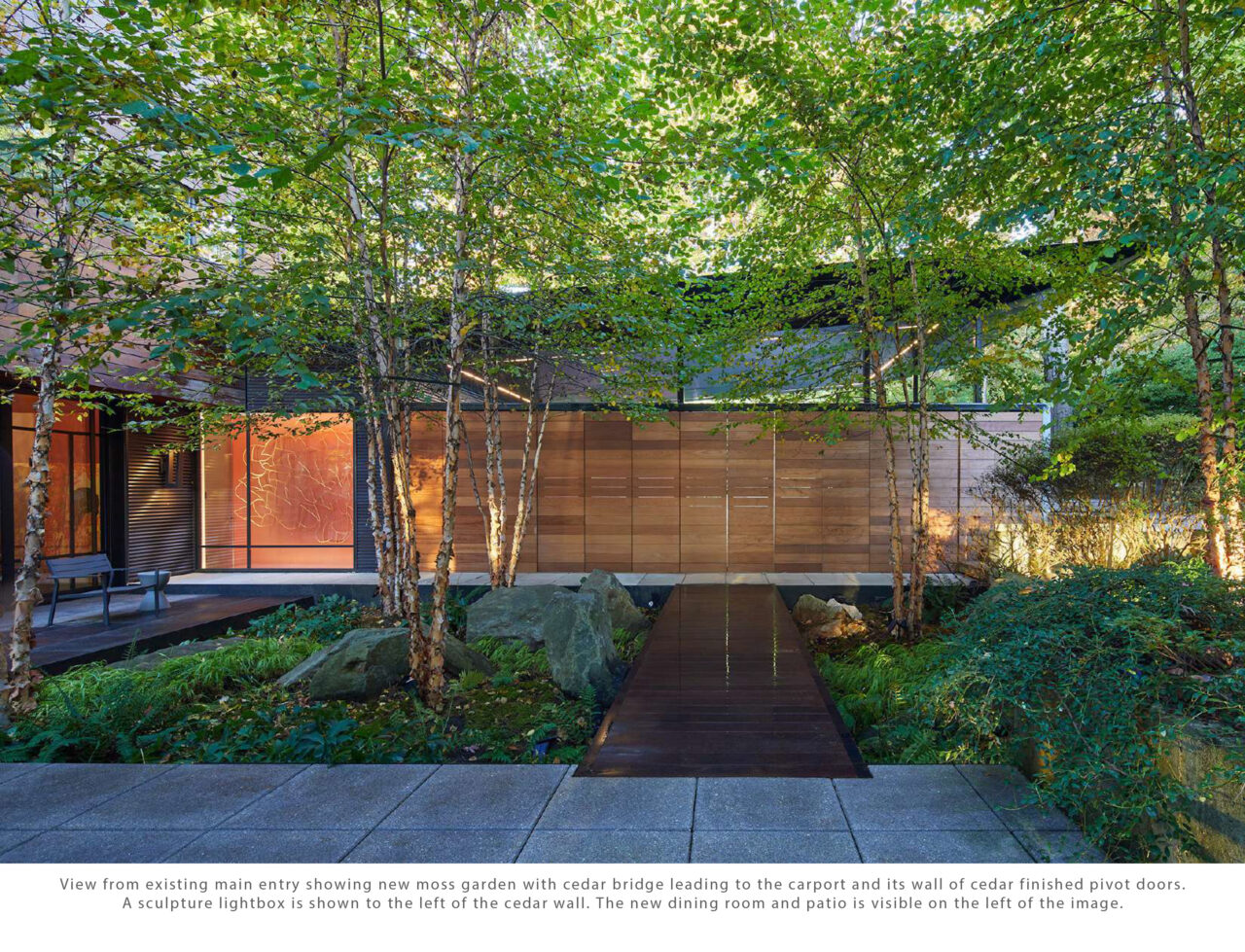Platinum Winner of the International Architecture & Design Awards 2024
Architect / Designer:
Christopher Tucker
Studio:
MODE4 Architecture, PLLC
Design Team:
Architect:
MODE4 Architecture, PLLC.
Christopher Tucker, AIA
Contractor:
Steve Howard
Square One Development Group, LLC
Photographer:
StudioHDP
Anice Hoachlander, Architectural Photographer
Designer of the pivot door:
Christopher Tucker, AIA, Principal/Owner, Kenneth López, Senior Architectural Associate
Other involved parties, Hardware resellers, contractors, or distributors
1. Hardware Reseller: Better Building Hardware
2. Manufacturer of the pivot door: Square One Development Group, LLC
3. Structural Engineer: United Structural Engineers, Inc.
4. Original house designed by Robert M. Gurney, FAIA Architect.
5. Addition Designed by: MODE4 Architecture, PLLC
Copyright:
Photographer: StudioHDP Anice Hoachlander, Architectural Photographer
Country:
United States
Program:
-Conversion of old gravel parking area into a new moss garden
-Conversion of old garage into a new dining room
-Conversion old gravel driveway into a new carport and “Post-COVID” exterior entertaining space
-Addition of new garage and artist’s studio to the existing home
-Addition of sustainability measures and stormwater management on site
Measure 1: Design for Integration
• The project seamlessly blends the new addition with the existing structure while enhancing its functionality and aesthetic appeal.
• The design incorporates an inspired Japanese garden as a focal point and provides exterior social gathering areas.
• The project carefully considers the sensory experience throughout its design to engage the senses and connect people to the place with the use of an inspired Japanese garden with captivating elements such as vegetation, and a serene ambiance.
Measure 2: Design for Equitable Communities
• The project extends its positive impact beyond the immediate surroundings by incorporating principles of equitable design such as the positioning of the carport, garage, Japanese garden, dining room, and artist’s studio, which foster social interaction and provide spaces for gathering and connection.
• The strategic positioning of communal spaces such as the carport, garage, Japanese garden, dining room, and artist’s studio fosters social interaction and provides spaces for gathering and connection.
Measure 3: Design for Ecosystems
• The design of the project encourages users to become more aware and connected with the project’s place and the regional ecosystem through thoughtful landscape design and the integration of natural elements.
• The careful selection of durable materials and construction techniques ensures the project’s longevity and minimizes the need for frequent repairs or replacements.
• By using sustainable stormwater management techniques like rainwater collection and permeable surfaces, the project will have less of an influence on the nearby water supply and will help maintain the natural balance.
Measure 4: Design for Water
• Sustainable stormwater management practices, such as rainwater harvesting and permeable surfaces, reduce the project’s impact on local water resources and contribute to the overall ecological balance.
Measure 7: Design for Well-being
• The project incorporates various elements that promote physical activity and well-being, such as the spatial configuration and seamless flow between indoor and outdoor spaces.
• The selection of high-quality materials and the integration of ample natural light, and proper ventilation, contribute to the comfort and durability of the spaces.
Measure 8: Design for Resources
• The architect considered factors such as durability, sustainability, and environmental impact when selecting materials, prioritizing those with a long lifespan and low environmental footprint, such as responsibly sourced wood and recycled materials.
MODE4 Architecture, PLLC
MODE4 Architecture’s purpose is to design beautiful modern architecture, finely tailored to our client’s needs. To achieve this purpose, we understand our first priority is to listen. We strongly believe the most successful architecture begins with thorough investigation of all design possibilities during the early design phase, and is achieved through a collaborative process involving open and honest discussions between the architect, client, and builder.
Great solutions need to be designed thoughtfully and holistically, from schematic diagrams through construction details. It is with expert attention to both space-making and detailing that MODE4 Architecture, PLLC creates comfortably sophisticated architecture, designed for the way you live.



